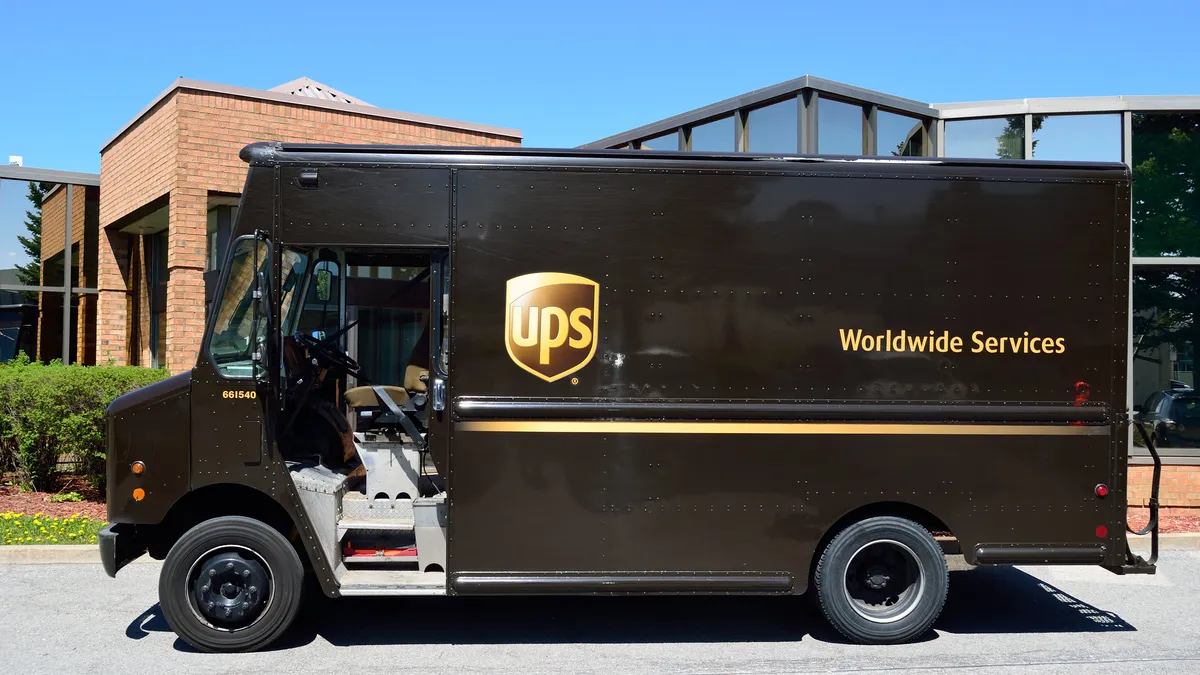The e-commerce boom pushed supply chain companies to move full steam ahead on digital transformation. And then the pandemic hit, demanding even more adaptability and resiliency from companies.
In the aftermath of COVID-19, UPS focused more closely on its data analytics tools and how data-driven capabilities can help the company respond to rising demand, said Juan Perez, chief information and engineering officer at UPS.
"For many, many years we've been a data analytics organization," said Perez, speaking Wednesday at Reuters Events' MOMENTUM Virtual Forum. "We consume enormous amounts of data here … to constantly find ways to improve the way we run our business."
In the third quarter of 2020, the company saw a significant increase in domestic shipping, with its average daily delivery volume increasing by almost 14% year over year. Data-driven platforms will support UPS as a hectic holiday season unfolds.
"Today we're more reliant than ever on technology," said Juan Perez. In the next iteration of its data analytics strategy, the company will focus on managing data as an asset, with applications that help speed up operations, save costs.
Here are three data applications helping UPS improve operations and manage surging volumes:
ORION
The UPS on-road integrated optimization and navigation (ORION) data platform was first deployed in 2013, and completed in 2016.
"In simple terms, what that technology does for UPS is it creates optimized dispatches, optimized routes, for our drivers to follow every single day," said Perez.
The data platform determines the most efficient individual route within seconds, and can produce tens of thousands route optimizations per minute, according to the company website. It also saves UPS about 100 million miles per year.
"One mile we save per driver per day across all drivers in UPS in the course of one year will save UPS in excess of $60 million," said Perez.
Network planning
Data drives the company's visibility into its shipping network, which in 2019 helped it move 5.5 billion parcels in 220 countries and territories. Planning tools allow the organization to manage a "very complex, very large" network.
"Now we have what we call the network planning tools," Perez said. "Think of it as a digital twin of UPS' global network," said Perez. "It allows us to actually have visibility as to how packages and shipments move across the network across multiple modes."
Similar to the capabilities of ORION, UPS turns to its network planning tools to run different models and better determine the most efficient way of moving packages across the entire network.
This helps the company "reduce cost, improve emissions, and ultimately provide a better service to our customers," Perez said.
Automation
UPS' push to automate operations led it to sort 75% of domestic ground volume in automated facilities at the end of 2019. The efficiency gains of automated warehouse operations made the company project the addition of 5 million square feet of automated capacity in 2020.
"Automating certain aspects of our processes is top of mind for all of us here in the company," Perez said. "As we deploy automation technologies, we can continue to see improvements, not only in efficiency, but also in terms of sustainability and safety."
The company is also experimenting with drone delivery, as have large retailers such as Amazon and Walmart.
"We formed a unit called UPS Flight Forward, that has very effectively built new use cases to support the use of drones for package movement," said Perez. The shipper has already used drones to deliver products within healthcare campuses. In Florida, UPS partnered with CVS to enable drone delivery in a retirement community in Florida.












